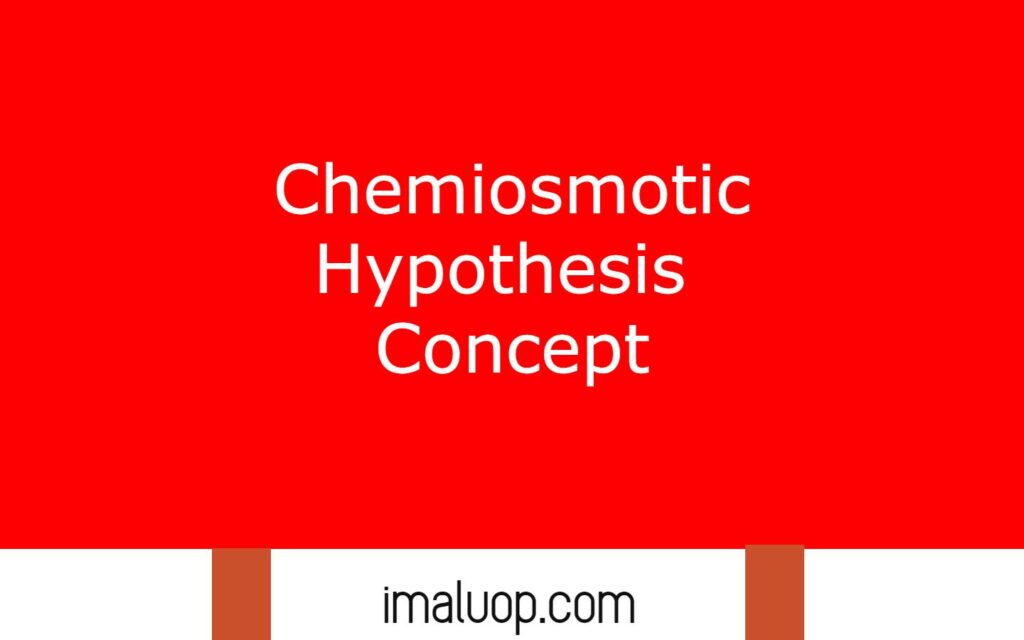Hi, now we are going to discuss a special type of biochemical event in living cells, the chemiosmotic hypothesis concept which will give you an general overview of how ATP synthesis occurs in chloroplast during the process of photosynthesis.
Chemiosmotic Hypothesis:
In plant body a special type of cell organelles present, chloroplast which is capable to utilise the carbon dioxide and water with the energy of solar radiation and produce the food for plant but when photosynthesis occurs inside the chloroplast a special type of biochemical event occurs in chloroplast and as a result ATP is produced in chloroplast.
Peter Mitchell was the first scientist who observed different biochemical reactions occur in a plant cell during photosynthesis and he explained to us how plant cell chloroplast can produce ATP during the process of light reaction in photosynthesis.
We know that photosynthesis occurs in plant in two steps, one is light dependant light reaction and another one is light independent dark reaction and during the process of light reaction NADPH and ATP is produced and the product of light reaction is very important for next step of photosynthesis and here we will not discuss about how the NADPH and ATP is used further in dark reaction because we have already discussed about various phases of photosynthesis, now we will only focus how the ATP is produced during the light reaction of photosynthesis.
During the process of photosynthesis the concentration of proton on both side of thylakoid membrane in chloroplast is not same so a concentration gradient established on the both side of thylakoid membrane and chemiosmotic hypothesis say that this chemical gradient is the main reason for the production of ATP during the light reaction.
But only the gradient of protons is not only able to produce ATP, they need many other things like ATP synthase enzymes, proton pump and the enzyme ATP synthase is a very important enzyme to produce ATP and these enzymes also present in other cells where energy production is required.
The ATP synthase enzymes have two parts one F0 and another part is F1 and the F0 part presents as transmembrane structure and F1 part changes its conformation and this change activates the ATP synthase enzymes.
The proton gradient developed in two sides of thylakoid membrane also cause activation of the enzyme ATP synthase and the ATP synthase enzyme is responsible for phosphorylation of ADP and this biochemical reactions produce ATP which is further used in dark reaction to convert the carbon dioxide into organic foods sugar.
How Proton Gradients Created During Photosynthesis:
Now we will discuss the source of protons during the process of light reaction and this proton is very important because the proton gradient is the main reason for producing the ATP during light reaction.
During photosynthesis the photosystem present in plants absorbs the solar energy and the solar energy breaks down the water molecules and it produces electron and proton and this proton is the source of proton in ATP synthase during light reaction.
The electron produced during the splitting of water molecules is used in electron transport chain but the proton produces keep accumulating and this proton cause proton gradient in the thylakoid membrane which activates the enzyme ATP synthase and this enzyme proceed the production of ATP from ADP but some proton is also used as reducing agent.

Chemiosmotic Theory:
According to this theory in the matrix of mitochondria, the Acetyl CoA is oxidised and combined with FAD and NAD then electron transport occurs and during the electron transport from one carrier molecules to another carrier molecules, the energy in the electron is used to pump the proton actively and it cause a transmembrane electrochemical gradient.
Read More: Calvin Cycle and its Process
Hi Everyone!!! Welcome to Imaluop. Imaluop always try to learn some new and he want to share to other people. Here we will try to learn various topics on Science, specially on Biological Sciences.
